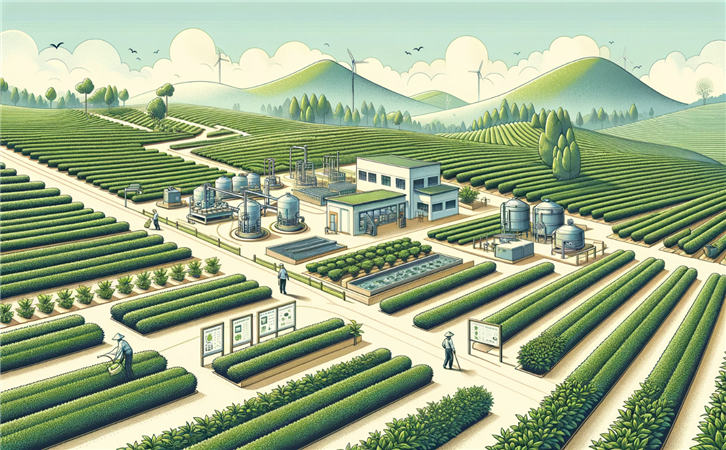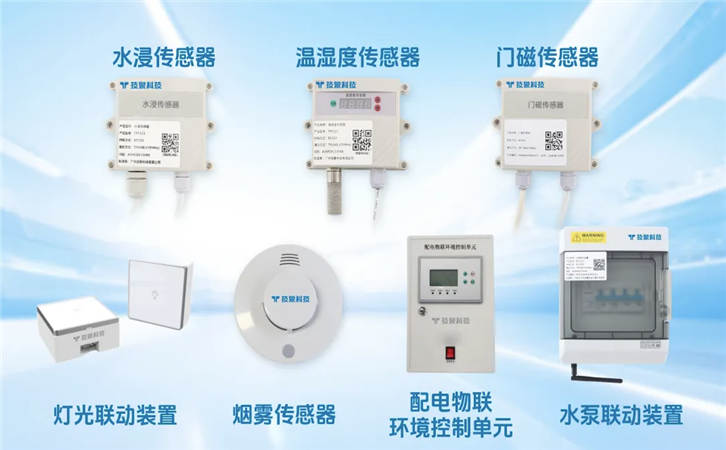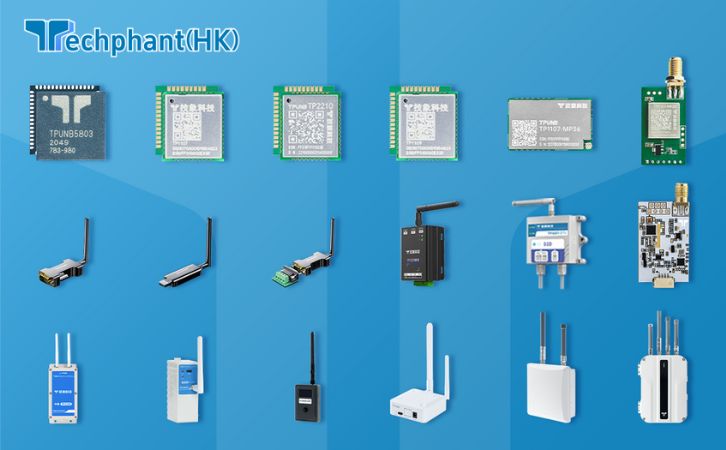The Internet of Things (IoT) has already transformed agriculture by enabling precision farming, resource optimization, and data-driven decision-making. As technology advances, the future of IoT in agriculture holds immense potential to further revolutionize the sector, addressing global challenges such as food security, climate change, and population growth. With innovations in connectivity, sensor technology, and data analytics, IoT is poised to make farming more efficient, sustainable, and accessible. This article explores four key future prospects for IoT in agriculture: global scalability, government support and subsidies, advancements in low-cost sensors, and the impact of 5G and next-generation connectivity.
I. Global Scalability of IoT Solutions
The scalability of IoT solutions across diverse agricultural regions is a critical prospect for the future, enabling widespread adoption and transforming farming practices globally.
- Applications: IoT systems can be tailored to various agricultural contexts, from large-scale farms in developed nations to smallholder farms in developing countries. For example, scalable IoT platforms like Microsoft Azure FarmBeats can integrate soil, weather, and crop data to provide customized solutions for different farm sizes and crop types. Cloud-based IoT platforms enable global data sharing, allowing farmers in Africa to benefit from insights developed in Europe or Asia.
- Benefits: Scalable IoT solutions can increase global food production to meet the projected demand for a 70% increase in food supply by 2050, according to the FAO. They also promote knowledge transfer, enabling farmers to adopt best practices from other regions. For instance, IoT-based irrigation systems scaled in India have improved yields by 20% for smallholder farmers, demonstrating global applicability. Scalability also fosters collaboration between agribusinesses, tech providers, and farmers, driving innovation.
- Challenges: Scaling IoT globally requires addressing disparities in infrastructure, such as internet access in rural areas. Cultural and economic barriers, like resistance to technology adoption or high costs, must also be overcome. Standardizing IoT platforms to ensure interoperability across regions is another hurdle, as diverse systems may lack compatibility.
- Future Outlook: Initiatives like open-source IoT platforms (e.g., ThingsBoard) and partnerships between tech companies and NGOs are expected to drive scalability. By 2030, it’s estimated that 80% of global farms could adopt IoT solutions, particularly in regions with growing agricultural tech ecosystems like India and Brazil.
Global scalability will democratize access to IoT, empowering farmers worldwide to enhance productivity and resilience, though infrastructure and standardization challenges must be addressed.
II. Role of Government Policies and Subsidies
Government policies and subsidies are set to play a pivotal role in accelerating IoT adoption in agriculture, making advanced technologies more accessible to farmers, especially smallholders.
- Applications: Governments can provide subsidies for IoT hardware, such as sensors and gateways, or fund connectivity infrastructure like LoRaWAN networks in rural areas. For example, India’s Digital Agriculture Mission (2021–2025) includes subsidies for IoT devices to promote smart farming among smallholder farmers. Policies can also incentivize sustainable practices, such as IoT-based water conservation systems, through tax breaks or grants.
- Benefits: Subsidies reduce the financial burden of IoT adoption, which can cost $1,000–$10,000 for a small farm’s initial setup. Government-backed training programs can enhance farmers’ technical skills, increasing adoption rates. A 2024 study in the EU showed that subsidized IoT systems increased adoption by 25% among small farms, leading to a 15% rise in crop yields. Policies also encourage public-private partnerships, fostering innovation in IoT solutions tailored to local needs.
- Challenges: Bureaucratic delays and inconsistent policy implementation can hinder subsidy programs. Corruption or mismanagement in some regions may divert funds from farmers. Additionally, policies must balance support for large agribusinesses and smallholders to avoid inequity. Lack of awareness about available subsidies can also limit their impact.
- Future Outlook: Governments are likely to expand IoT-focused agricultural policies, with initiatives like the EU’s Green Deal aiming to integrate IoT for sustainable farming by 2030. Global organizations, such as the World Bank, may fund IoT projects in developing nations, further driving adoption.
Supportive policies and subsidies will be crucial for making IoT accessible, fostering equitable growth in smart agriculture across diverse economies.
III. Advancements in Low-Cost Sensors and Open-Source Platforms
The development of affordable sensors and open-source IoT platforms is a game-changer, reducing costs and enabling widespread adoption, particularly for small and medium-sized farms.
- Applications: Low-cost sensors, such as capacitive soil moisture sensors priced under $10, are being developed using advanced manufacturing techniques like 3D printing. Open-source platforms like Arduino and Raspberry Pi allow farmers to build custom IoT systems for monitoring soil, weather, or livestock. For example, a DIY IoT system using Raspberry Pi can monitor greenhouse conditions for less than $100, compared to commercial systems costing thousands.
- Benefits: Affordable sensors lower the entry barrier for IoT adoption, enabling smallholder farmers in developing countries to access smart farming tools. Open-source platforms foster innovation, as developers and farmers can customize solutions to local needs. A 2023 report indicated that low-cost IoT systems increased adoption by 30% in Sub-Saharan Africa, boosting yields by 10–15%. These advancements also reduce dependency on proprietary systems, giving farmers more control over their data.
- Challenges: Low-cost sensors may lack the durability or accuracy of premium models, requiring frequent replacements. Open-source platforms demand technical expertise, which may be scarce in rural areas. Ensuring cybersecurity for DIY systems is another concern, as open-source solutions can be vulnerable to hacking.
- Future Outlook: By 2030, advancements in nanotechnology and IoT chipsets are expected to further reduce sensor costs to below $5, while open-source communities will expand libraries of agricultural IoT solutions. Initiatives like the Open Ag Tech movement are likely to standardize affordable, interoperable systems.
Low-cost sensors and open-source platforms will make IoT inclusive, enabling farmers of all scales to leverage smart farming technologies.
IV. Impact of 5G and Next-Generation Connectivity
The rollout of 5G and next-generation connectivity solutions, such as satellite-based internet (e.g., Starlink), promises to enhance IoT capabilities in agriculture, enabling real-time, data-intensive applications.
- Applications: 5G’s high-speed (up to 10 Gbps) and low-latency (1 ms) connectivity supports applications like real-time drone surveillance, autonomous tractors, and IoT-enabled robotics. For instance, 5G can enable a fleet of IoT-connected drones to monitor crop health across a 1,000-hectare farm, streaming high-definition imagery for instant analysis. Satellite internet can provide connectivity to remote farms, supporting IoT systems for livestock tracking or weather monitoring.
- Benefits: 5G’s massive device connectivity (up to 1 million devices per square kilometer) allows large farms to deploy thousands of sensors without network congestion. Its low latency enables real-time control of automated systems, such as precision sprayers, reducing pesticide use by 20%, according to a 2024 study. Satellite internet ensures IoT functionality in areas lacking traditional networks, bridging the digital divide in rural regions.
- Challenges: 5G infrastructure is still limited in rural areas, with deployment costs estimated at $500 billion globally by 2030. High energy consumption of 5G-compatible devices can strain battery-powered sensors. Satellite internet subscriptions, while improving, remain expensive for small farmers, with costs around $50–$100 per month.
- Future Outlook: By 2035, 5G coverage is expected to reach 70% of rural agricultural areas, driven by investments from telecom providers and governments. Satellite internet providers like Starlink are projected to lower costs, making IoT viable for remote farms worldwide.
Next-generation connectivity will unlock the full potential of IoT, enabling data-driven, automated farming systems even in the most remote regions.
Conclusion
The future of IoT in agriculture is bright, with prospects like global scalability, government support, low-cost sensors, and 5G connectivity poised to transform the sector. Scalable solutions will make IoT accessible across diverse regions, while policies and subsidies will reduce financial barriers. Affordable sensors and open-source platforms will empower smallholder farmers, and next-generation connectivity will enable real-time, data-intensive applications. Despite challenges like infrastructure gaps and technical complexity, ongoing innovations and global collaboration will drive IoT adoption, enhancing productivity, sustainability, and resilience. By 2030, IoT is expected to play a central role in feeding a growing population, aligning agriculture with global goals for food security and environmental conservation.



